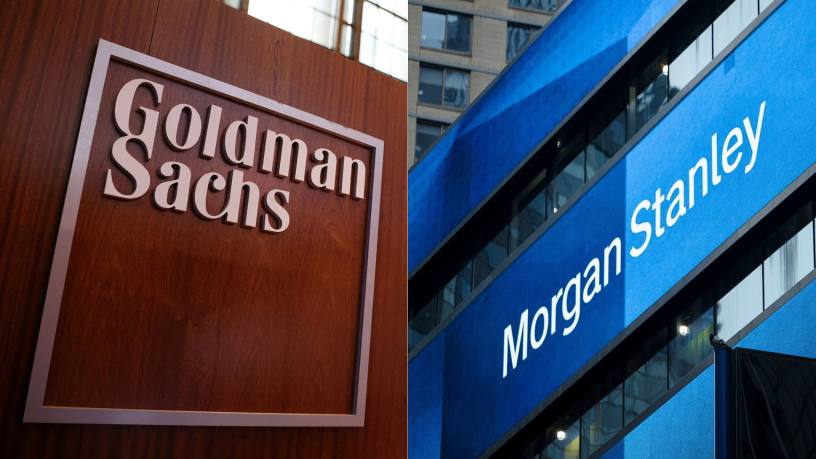At a glance
- End-of-year results for 2023 show green shoots for Wall Street
- Analysts see potential turnaround stories for Citi and Goldman Sachs after a difficult couple of years
- Non-performing loans have not bitten yet, but credit, commercial real estate and rental commercial properties are areas to watch
Banks and the journalists that follow them are always intensely busy during the earnings season. Over the past couple of weeks, Bank of America (BoA), JPMorgan Chase, Citi, Wells Fargo, Goldman Sachs and Morgan Stanley all shared their Q4 2023 results.
The Banker looked at what analysts expected from them in the run up to their publication. Now the results are here, it is worth taking stock of what the banks have shared with the markets in terms of figures and strategy.
Turning around
Citi and Goldman Sachs were the two names analysts seemed most curious about as they have been going through significant changes in direction. In its outlook, the BoA was optimistic that both had turned a corner after going through a difficult couple of years. That was the line also taken by HSBC.
During Citi’s results day, chief financial officer Mark Mason said the bank would cut 20,000 jobs by 2026, accounting for 8% of its workforce. And in her introductory statement, chief executive Jane Fraser said: “While the fourth quarter was very disappointing due to the impact of notable items, we made substantial progress simplifying Citi and executing our strategy in 2023.
“We restructured around five core, interconnected businesses to align our organisation with our strategy and to provide greater transparency into their performance.”
The boldness of these decisions has pleased analysts, and in a follow-up note, BoA said: “We believe that management said all the right things as the [Wall] Street evaluates the probability of Citi achieving a 10%+ return on tangible common equity by 2026. Friday’s [January 12] update reaffirms our view that Citi offers the most compelling risk/reward in the large-cap banks.”
This is despite it suffering a net loss of $1.8bn over the fourth quarter, primarily driven by higher expenses, the higher cost of credit and lower revenues.
HSBC head of US financials research, Saul Martinez, says: “The fact they [management] gave aggressive targets has been well received.”
Mr Martinez also likes what he heard from Goldman Sachs even though the bank is “still underearning”, as the “tangible targets set out means positive progress is being made here”.
The theme of transition from a multifaceted business model to a more focused one also appeared in Goldman Sachs CEO David Solomon’s remarks regarding its results.
“This was a year of execution for Goldman Sachs. With everything we achieved in 2023 coupled with our clear and simplified strategy, we have a much stronger platform for 2024.
“Our strategic objectives underscore our relentless commitment to serve our clients with excellence, further strengthen our leading client franchise and continue to deliver for shareholders.”
Net income fell to $8.52bn over the fourth quarter with investment banking fees coming at $6.22bn over the year, 16% lower than 2022.
According to the results, this reflected a significant decline in industry-wide completed mergers and acquisitions transactions, alongside slightly lower net revenues in debt underwriting, which were partially offset by significantly higher net revenues in equity underwriting.
This was primarily reflecting increased activity from secondary offerings. The firm’s investment banking fees backlog was lower compared with the end of 2022.
Questions asked
In its forecast for Morgan Stanley, the BoA raised questions about a “relatively nascent” business strategy that needs to “prove its resilience” over the long term. This caution is centred on the investment bank’s desire to up its wealth management proposition.
Morgan Stanley’s wealth management arm reported net revenues of $26.3bn, compared with $24.4bn a year ago.
New CEO Ted Pick talked about wanting to expand the wealth management arm in an interview at Davos last week. “We want to hit 30% margins in wealth [division], 30% margins for the firm including the investment bank and 20% returns on tangible [assets].”
Mr Pick also reiterated the bank’s fundamental goals of getting the total group’s assets under management to $10tn and 20% returns.
Mr Martinez said Morgan Stanley’s outlook is a “bit murky with the wealth business”.
Read more
Wells Fargo was chosen by BoA to report strong earnings based on its diversified revenue streams from wealth, cards, capital markets and digital banking.
Yet, BoA observed it was “the notable underperformer” among its peers with higher commercial real estate losses that came in above forecast.
Wells Fargo CEO, Charles Scharf, said: “We are closely monitoring credit and while we see modest deterioration, it remains consistent with our expectations. Our capital position remains strong and returning excess capital to shareholders remains a priority.”
The bank set aside an additional $1.3bn for credit losses during Q4 2023 and posted $3.45bn net income over the same period.
Non-performing loans
Bank watchers have been increasingly focused on any uptick in non-performing loans as interest rates rise.
HSBC’s Mr Martinez has said that credit, commercial real estate and rental commercial properties are areas to watch.
“I did see a bit of news from Wells Fargo [on commercial real estate], but the US banks I cover have 1% to 3% of their loan books in this asset class,” he said.
“One thing to keep in mind for banks is they have capital requirements and are stress tested to determine what those will be. Therefore the biggest banks tend to be pretty conservative underwriters.”
For now, Mr Martinez is confident there will be no sudden spike in non-performing loans at US banks.
“Credit is important and you are seeing upward pressure on non-performing loans but it is pretty moderate right now. Currently, there are no big surprises and banks have been increasing reserves for losses, especially in commercial real estate.”













